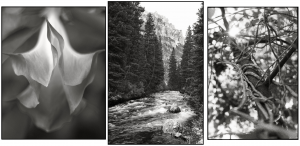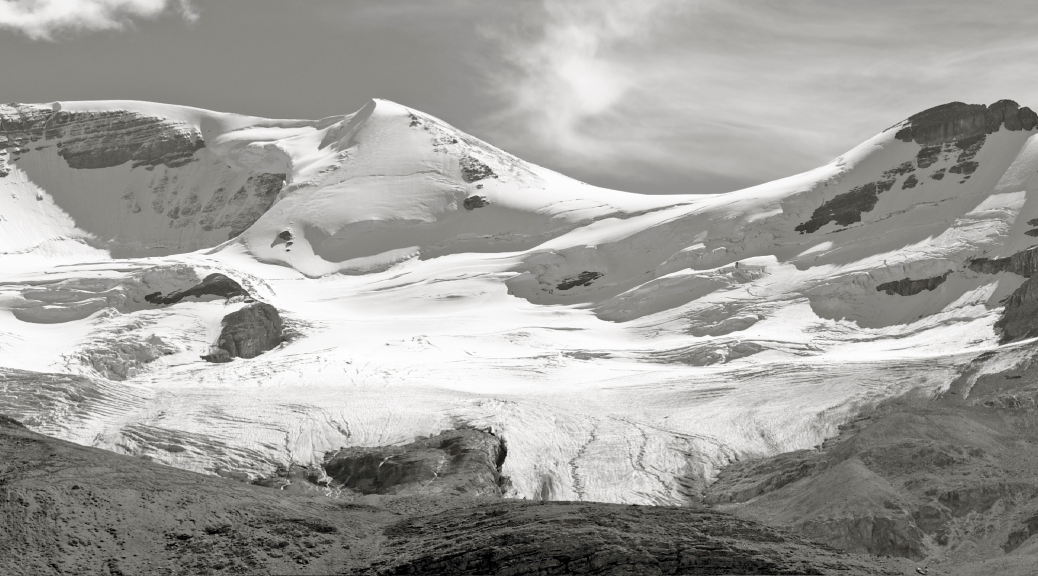Art Guide is pleased to present the work and words of one of our site’s top Feature Artists, professional photographer Lance A. Lewin. Lance is the owner of Visualizingart.com, and also works as an instructor and writer. He developed his technical camera skills through a combination of personal training, study of art history and research of pioneers in photography from the mid to late 19th and 20th centuries.
Building from a construct of art history, drawing and design, Lewin develops aesthetic images through solid compositional interpretations of nature. His work focuses on texture, pattern, mass, shadow and light. Lance always tries to avoid popular trends in photography in an effort to maintain the purity of pictorial elements of open landscapes and natural subjects. The result is a portfolio of integrity that honors abstracted natural subjects and the authenticity of nature landscapes.
Lance Lewin notes in his Featured Artist discussion that, “The embodiment of photographic techniques developed, learned and expanded in both the 19th and 20th Century, should serve as the backbone to pedagogic material for students of photography in the 21st century and beyond. As such, my methodology of teaching photography is structured to embrace traditional photography skill sets and their application into the digital photography revolution”. 
Viewing the Wonders of Nature from an Insiders Perspective
By Lance Lewin
“Through the process of “Visualization” I learn to see what others often miss in their hurried pace: creeping along the forest floor or climbing tree limbs to explore often hidden spaces… to examine the intricacies and interactions between light, shadow and texture.”
The “Intimate with Nature” body of work is composed mostly with a Canon prime F/1.4 50mm glass, but also with Minolta’s Rokkor-X Prime F/2.8 24mm and F/2.5 100mm lenses. When desired, I can interchange these lens between my digital DSLR and Minolta XD-11 film-camera systems via special adapter. The 24mm and 50mm lenses present beautiful Bokeh, an important component in a lot of my close-up nature and portrait photography. Subjects are composed through the viewfinder and completed with minimum post-production manipulation, including adjusting exposure, color, white-balance and other luminance and chromatic variables. I use Photoshop, Color Efex Pro 4 and Silver Efex Pro-2 software tools. Most Black & White renderings include a custom copper-silver toning. Focusing is completed manually. Both film and digital formats is represented, each offering a slightly different aesthetic. Film negatives are scanned using Frontier based equipment.
Through the process of “Visualization”, I learn to see what others often miss in their hurried pace: creeping along the forest floor or climbing tree limbs to explore often hidden spaces. Peering through bushes, thick grass and exploring behind rocks, or the crevasse of tree-bark and moss to examine the intricacies and interactions between light, shadow and texture. Alternatively, my lens also takes a step back to encompass a wider view to capture a grand-scape perspective: together these different views bring to print a swatch of the normally hidden beauty, mystery and foremost, reality that surround our space.
In closing Lewin notes, “I invite you to look closely and seek more than what first meets the eye, but instead, explore deeper to find perhaps an emotional connection or become “pricked”[1] to these normally perceived austere, or common place objects in nature.”
________________________________________________
Pricked” as so eloquently described by Roland Barthes (1915 to 1980) of photographs that grab a viewer’s attention and brings them back for a second look: a photograph that draws an emotional response from the viewer.


